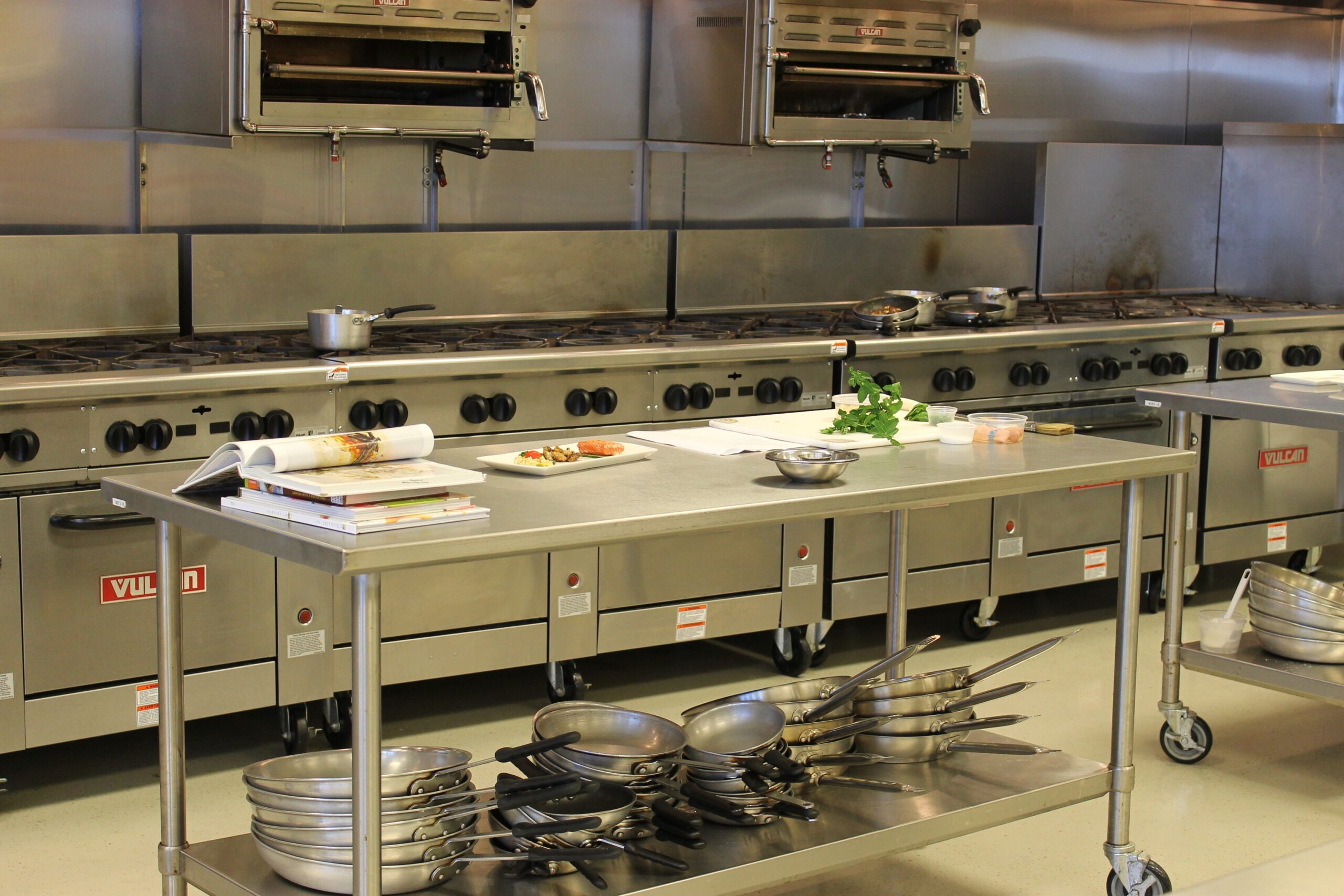What Is A Cloud Kitchen
We’d like to introduce you to cloud kitchens, what is a cloud kitchen? Cloud kitchens are commercial facilities that were designed from the ground up to produce food specifically for delivery. These delivery-only food brands that operate within these commissary kitchens are referred to as virtual restaurants. Sometimes these commissary kitchens are also referred to as ghost kitchens, shared kitchens, or virtual kitchens.
You might be thinking to yourself, “this is nothing new,” and in a sense, you would be correct in that assumption. For decades, Chinese restaurants have been capitalizing on the convenience of delivery service. Additionally, the pizza industry has practically constructed its entire business model around the optimization of delivery services. Recent technological advancements as well as shifts in consumer behavior have made it feasible to switch to a business model that focuses exclusively on delivery of products.
In comparison to offering delivery from a conventional restaurant with brick-and-mortar locations, this method has a few distinct advantages.

How does a cloud kitchen work?
Cloud kitchens are centralized licensed commercial food production facilities where anywhere from one or two restaurants all the way up to dozens of restaurants rent space to prepare delivery-optimized menu items. Cloud kitchens are also known as shared kitchens. It’s possible for a single establishment to house multiple brands of food or even multiple virtual restaurants, all of which run under the same roof. Alternatively, the kitchen could be managed like an incubator and shared by multiple purveyors.
Imagine a large warehouse with a number of stations (mini-restaurants) spread throughout it, each with its own set of stainless steel prep tables, hood vents, stoves, ovens, and sinks. Each station has its own set of customers who place orders directly with it.
Items on the menu of a cloud kitchen are designed to facilitate simple production and ensure consistent high-quality food upon delivery. Cloud kitchens are often physically located in industrial complexes outside of towns, and they may provide driver parking, driver waiting areas (often with screens to monitor order times), and check-in stations for seamless driver pick-up. Everything is organized to speed up the process of getting food to the customer and out the door as quickly as possible.
Cloud kitchens offer a one-of-a-kind technological advantage. They make use of apps on your smartphone that facilitate food delivery, such as UberEats, Grubhub, and Doordash. These apps are now commonplace. In order to accomplish this, they analyze vast amounts of data to determine the kinds of foods to produce for particular areas and the times of day during which the demand is most likely to be at its peak.
For instance, between the hours of 11 p.m. and 2 a.m., near college campuses, hot wings are typically very popular. Almost in real time, rapid adaptation and optimization are being fueled by this data’s insights.
As the technology has advanced, new services have emerged to aggregate the various delivery apps into a single portal. This allows for easier production of multiple orders and delivery coordination, as well as the development of intelligent food purchasing and production software, which aims to reduce the amount of food that is wasted while simultaneously increasing per-meal unit economics. We have only been exposed to the very surface of the innovation that exists in this field.
What is a cloud kitchen and what are the advantages?
Answering the question what is a cloud kitchen must include a list of advantages. Cloud Kitchens are a fantastic alternative to the traditional restaurants that are housed in brick and mortar buildings. Users are able to focus on food production and product promotion with the help of ghost kitchens, which remove the administrative and logistical headaches that plague many food businesses.
Here are just a few more reasons to hire a cloud kitchen for your company:
1. Affordable Initial Investment
If you lease a commercial kitchen from a ghost kitchen, you can avoid paying leasing fees, utility fees, and mortgage fees, which can result in significant cost savings.
2. Reduced Overhead
Traditional restaurant proprietors have had a difficult time staying in business as a result of high property taxes, labor payroll that is difficult to manage, and annoying maintenance costs. The time-consuming and expensive administrative tasks are handled efficiently and effectively by cloud kitchens. Restaurants that use cloud kitchens will typically only employ one or two cooks and will share the associated costs with their fellow tenants.
3. Conveniences
Imagine running a food company where you were able to focus all of your attention on your customers and the food you were producing. The existence of ghost kitchens makes this a reality. The administrative tasks listed below are the kinds of things that ghost kitchen providers typically take care of so that you don’t have to: There are numerous examples, including but not limited to: health inspections, equipment repairs, janitorial services, security monitoring, property taxes, and utility bills.
4. Expanded Reach
By utilizing cloud kitchens, the company will be able to place a greater emphasis on food distribution and reach a larger audience. Restaurants that are optimized for delivery typically promote their business through the use of delivery apps and social media rather than through the use of other, more constrained marketing platforms. Through the expansion of your marketing platforms and the enhancement of your visibility, cloud kitchens will assist you in developing a more powerful brand.
5. Improve the delivery experience.
Does your company have a significant physical presence in any particular location? Cloud kitchens allow you to expand your business by allowing you to make deliveries from a single location and by allowing you to generate multiple streams of revenue. By accepting online orders for food delivery, cloud kitchens make it possible for traditional restaurants to keep up with rising demand without putting undue strain on their kitchen staff.
6. Meet Customer Demands
The flexibility to cater to the requirements of your customers is made possible by cloud kitchens. Consumer demand for quick meal options that are affordable has been a driving force behind the expansion of food delivery services that are available online. Cloud kitchens are helping to meet the growing demand for online food delivery by streamlining logistics, reducing costs, and introducing technological innovations.
Launch a brand that focuses solely on delivery.
 Go to The Kitchen Door and type in the name of the city or zip code where you live if you are considering launching a food brand that is only available for delivery. You will be provided with a list of shared kitchens that are available for rent in your area, along with all of the information that you require to learn more and get in touch with the owners.
Go to The Kitchen Door and type in the name of the city or zip code where you live if you are considering launching a food brand that is only available for delivery. You will be provided with a list of shared kitchens that are available for rent in your area, along with all of the information that you require to learn more and get in touch with the owners.

